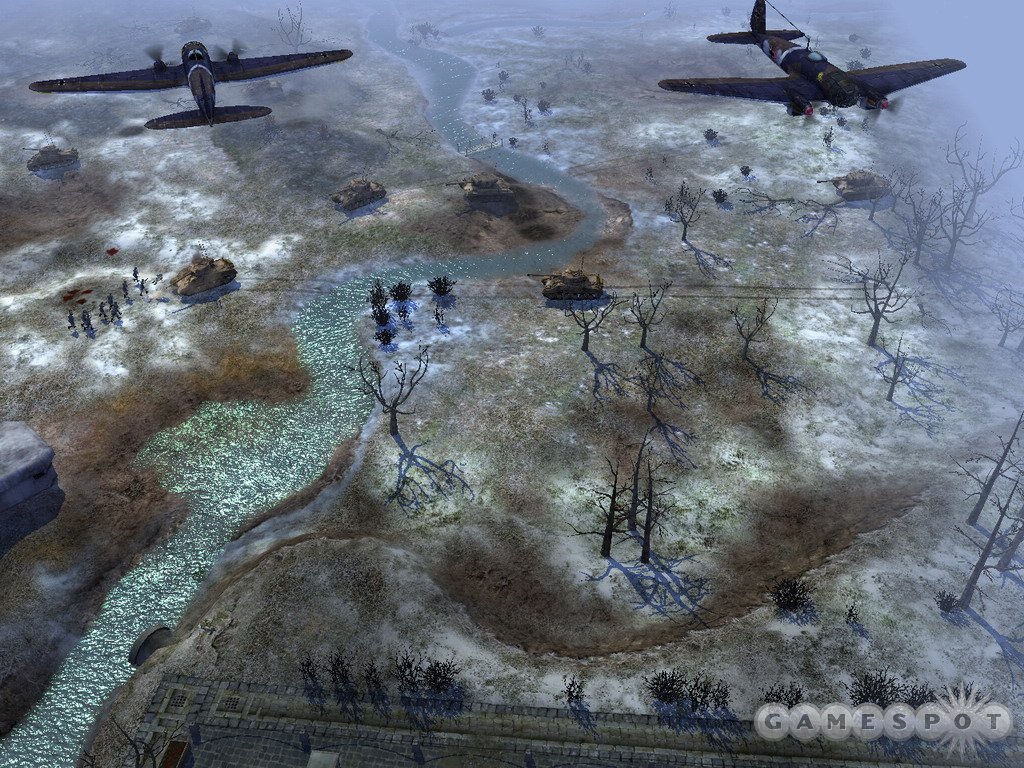E3 06: Rush for Berlin Hands-On - Combat, Alternate Histories, and World War II Real-Time Strategy
Stormregion looks to deliver its latest World War II real-time strategy game, Rush for Berlin, which depicts the closing days of the war as well as an alternate-history campaign.
Though Rush for Berlin isn't part of Hungarian developer Stormregion's Codename: Panzers series of World War II real-time strategy games, it could easily fit in. The Codename: Panzers games depict some of the great campaigns of World War II, from D-Day to North Africa. Rush for Berlin, on the other hand, focuses on the final months of the war, when the Allies "raced" to seize Germany's capital. Of course, the Soviet Union got there first, but Rush for Berlin will let you play from the perspective of the Red Army, the Western Allies (the United States, Great Britain, and France), and the Wehrmacht itself in an alternate-history campaign.

If you played the Codename: Panzers games, then it's worth noting that there are slightly different gameplay mechanics at work in Rush for Berlin, as well as more of a focus on officers, which are hero units with powerful abilities. Still, the overall concept is similar. You'll command infantry units (consisting of everything from regular infantry to sappers, antitank specialists, snipers, medics, and more), mechanized units, armor, and artillery on a real-time, 3D battlefield as you attempt to accomplish mission objectives and destroy the enemy. Some of the interesting features found in the Codename: Panzers games can also be found in Rush for Berlin, including icons that indicate that your troops can hear specific types of sounds from a certain area (such as the rumbling of diesel engines or the boot steps of approaching infantry). From what we've seen so far of the early version that we played, you'll also need to once again use smart tactics in order to succeed. That means employing combined-arms tactics to keep a balanced array of firepower at your disposal, as well as scouting ahead and locating enemy positions, barricading infantry inside buildings and structures, and hitting enemies in the flank by outmaneuvering them.
The two Allied campaigns are based on historical events, and you'll be tasked with either leading the Red Army after the victorious battle of Kursk (the largest tank battle in history) as it slowly pushes the Germans back, to the Americans and the Western Allies as they attempt to forge their way east. Most interesting is the German campaign, which asks what if the Germans had managed to get many of their prototype weapons into mass production? Armed with these advanced weapons, you'll lead the counterattack against the Allies, which is a nice twist from the usual role of the German player in these games, which is that of a speed bump against superior oncoming Allied and Soviet forces.

Rush for Berlin will feature approximately five multiplayer modes, including the conventional deathmatch and cooperative modes, but also featuring two fairly innovative modes for a World War II real-time strategy game. There's a "rush" mode, which pits you in a race to seize objectives before the other players. However, you also need to defend the objectives, because if they're destroyed, you don't get as many points for them. The first person to hit the predetermined point limit, or the player with the most points at the round's end, wins. Then there's a "risk" mode that gives each player a randomly assigned task, and the first player to accomplish his or her task wins. However, since no one knows anyone else's tasks, it should result in a wary and cautious game as players attempt to ascertain each other's intentions and blunt them.
The game uses what's called the Gepard graphics engine, though Rush for Berlin looks very similar to the Codename: Panzers games in terms of visuals. Though the graphics engine is starting to show its age at this point, it still offers some interesting detail, from the suspensions on tanks and other vehicles to pretty explosions and effects. Rush for Berlin should appeal to fans of Codename: Panzers, as well as fans of World War II real-time strategy games. The game is due to ship this summer.
Got a news tip or want to contact us directly? Email news@gamespot.com
Join the conversation